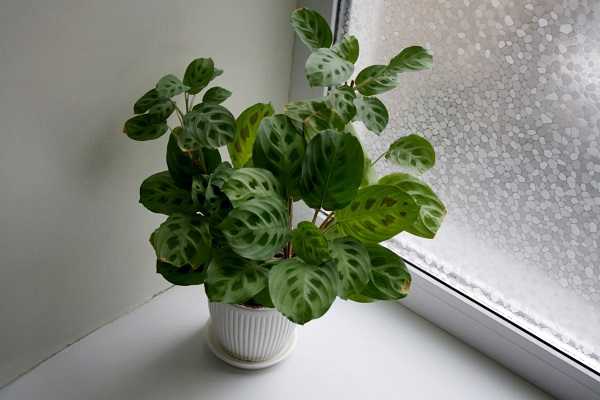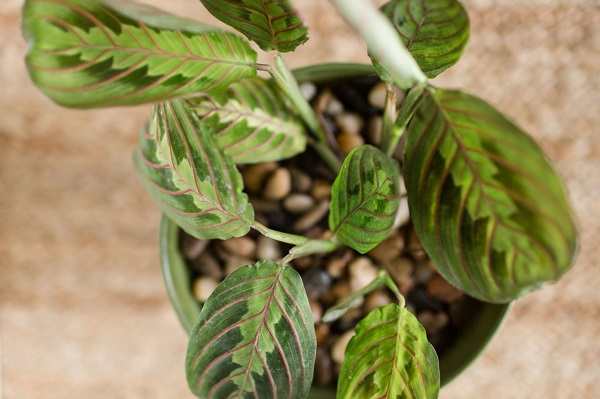The prayer plant, also known as Maranta Leuconeura, is a popular houseplant known for its striking leaves that fold up at night, resembling hands folded in prayer. Its vibrant green and red or purple leaves add a touch of tropical charm to any room.
However, prayer plants can experience problems like all plants and may require reviving. This blog post aims to provide helpful tips on how to revive a prayer plant if it has been neglected or over-watered so that it will restore its beauty and vibrancy.
From understanding the basics of prayer plant care to identifying the problem and providing solutions, you’ll learn everything you need to know to bring your prayer plant back to life.
Post Contents
Basic Information about Prayer Plant:
| Attribute | Information |
|---|---|
| Plant | Prayer Plant |
| Scientific Name | Maranta leuconeura |
| Native Region | Tropical Americas |
| Growth Habit | Perennial herbaceous plant |
| Leaf Pattern | Attractive pattern with variegated colors |
| Light Requirements | Indirect or filtered sunlight |
| Humidity | Prefers high humidity levels |
| Care Tips | Regular watering, well-draining soil |
| Pet-Friendly | Non-toxic to cats and dogs |
Before jumping to the actual guide, you can watch this video guide:
How to Revive a Prayer Plant? (Important Tips)
1. Check the roots: It is important to check them before doing anything else. If your plant is root-bound or the roots are rotting, you will need to repot it in fresh soil.
2. Check for pests: Prayer plants can become infested with aphids, thrips or spider mites. If you see any of these pests on your plant, treat it with an appropriate insecticide or neem oil.
3. Increase humidity: Prayer plants thrive in humid environments, so increasing the humidity around your plant can help revive it. You can mist your plant regularly with water or use a humidifier near your plant.
4. Increase light: Prayer plants need plenty of bright indirect light, so if your plant is not getting enough light, you should move it to a brighter spot.
5. Trim off dead leaves: If your plant has dead or dying leaves, it is important to trim them off. This will encourage new growth and help your plant look more healthy.
6. Fertilize: Prayer plants benefit from fertilization, so it is a good idea to give your plant an all-purpose fertilizer every few weeks.
7. Check for temperature: Prayer plants prefer warm temperatures and struggle if they are too cold or hot. Keep your prayer plant away from cold drafts, and make sure it is not in direct sunlight.
How to Identify Signs of Poor Health in a Prayer Plant?
If your prayer plant is not looking as luscious and vibrant as it used to, you may wonder what has gone wrong. Signs of poor health in a prayer plant include yellowing or browning leaves, wilting stems and drooping foliage.
If you notice brown spots on the edges or veins of the leaves, or if the whole leaf turns brown, it’s time to take action and revive your prayer plant.

The good news is that you can bring your prayer plant back to life with the right care and attention. To help you with this, we will discuss tips to revive a prayer plant.
Related Post: How Big Do Succulents Get? (A Complete Guide)
Basics of Prayer Plant Care:
Understanding the basics of prayer plant care is essential for keeping your plant healthy and preventing it from dying. The following are the main things to keep in mind:
Watering
Watering and fertilizing your prayer plant are two of the most important things you should consider when caring for it. When watering the plant, ensure the soil is moist but not saturated. Adding more water to the potting mix after it is dry will cause root rot. It is also important to avoid overwatering.
Light and Temperature
You cannot emphasize the importance of sunlight and temperature enough. Prayer plants need bright, indirect sunlight for at least 4-6 hours of the day to stay healthy. Meanwhile, it would help if you also kept in mind that too much direct sunlight can burn the leaves, so keep your plant away from direct sun or in a shady spot.
As for temperature, prayer plants prefer temperatures between 65 and 75 degrees Fahrenheit (18-24 degrees Celsius). This is why they typically do best in a room with normal temperatures.
Fertilizing
Fertilizing your prayer plant is important for its growth and vibrancy. A balanced fertilizer specially formulated for houseplants should be applied every two to four weeks during the growing season. The right fertilization schedule will help your prayer plant stay healthy and vibrant.
Also Read: Anthurium Crystallinum (Care, Growing & Propagation Guide)
Humidity
Humidity is also an important factor to consider when caring for a prayer plant. Prayer plants are native to tropical climates and prefer high humidity levels, so you may need to provide additional moisture in the air if your home has low humidity.
You can do this by misting the leaves or placing a water bowl close to the plant. It is best to avoid direct contact between the soil and standing water, as this could cause root rot.
You can also use a humidifier or pebble tray filled with water underneath the pot. The proper care for your prayer plant ensures its long-term health and growth!

How to Prune Dead Leaves from the Plant
To keep your prayer plant happy and healthy, it’s important to remove any dead leaves from the plant. Dead leaves not only detract from the appearance of your prayer plant but can also cause early decline if left unchecked.
Pruning dead leaves is easy – use scissors or gardening shears to remove any brown, yellow, broken or otherwise damaged leaves. Don’t worry if you accidentally remove some healthy leaves; the plant will grow new ones to replace them.
If the dead leaves are stuck and won’t come off easily, you may need to soak the plant in warm water for a few minutes. This will loosen the leaves and make them easier to remove. Be sure to dry the plant carefully afterwards and never leave it standing in water, as this can cause root rot.
Remember, dead leaves are just a fact of life for prayer plants, so don’t worry if new ones appear periodically. Just remove them as you see them to keep your plant looking great. It is very important to take care of your prayer plant in order for it to stay healthy and happy for many years to come.
Best Soil Mixture for Optimal Growth Conditions
To grow a prayer plant, you need loose, well-draining soil that is slightly acidic. You can achieve this by mixing equal parts of peat moss, vermiculite and perlite. You should also add a slow-release fertilizer to the soil to ensure your plant receives the right balance of nutrients.
To ensure optimal growth, keeping your soil consistently moist but not soggy is important. Overwatering can cause root rot, so ensure to water your prayer plant only when the top inch of soil is dry. If unsure, you can always check the moisture level with a soil moisture meter.
If you provide the right soil mixture to your prayer plant, you will provide it with the best conditions for growth and ensure its long-term health.
Conclusion
So, if your prayer plant looks dull and lifeless, there’s no need to despair! With some simple care tips and patience, you can revive a prayer plant and keep it looking healthy for years to come.
From checking the roots, increasing humidity, providing plenty of light and fertilizing regularly, there are plenty of ways to ensure your prayer plant thrives. With the right care and attention, you can keep your prayer plant looking great and enjoy its beauty for years.
Related Posts:

